The camera has become a decisive selling point for many smartphones. To feed social networks or for professional purposes, the ability to take beautiful pictures with your phone is essential. Of course, the flagships have the best photo modules. But more and more manufacturers are offering quality entry-level photo smartphones. To make the right choice, check out our guide to the best photo smartphones under 300 euros.
Here is our commitment, to make sure that we provide the best user experience and content quality:
You can support us by using our links to make your purchases (at no extra cost to you)! This sometimes earns us a commission which allows us to remain independent. More about us
Our selection
"The Xiaomi Mi 10T Lite 5G is the most affordable 5G smartphone you can find. It's also the cheap smartphone that offers the best camera…"
"Go for the Huawei P20 Lite for its 5.84" screen and large 64GB internal storage. With its 8 cores, you'll have little trouble switching between…"
"If you want a photo smartphone for less than 200 euros, rush to the Nokia 5.3. This model is for anyone who wants to get…"
"While the competition is upping the specs and prices, Xiaomi's Redmi Note 9 Pro sticks to its formula of offering good performance and photo quality…"
"The Xiaomi Poco X3 is probably the smartphone under 200 euros that offers the most powerful photo module. It has features most often seen in…"
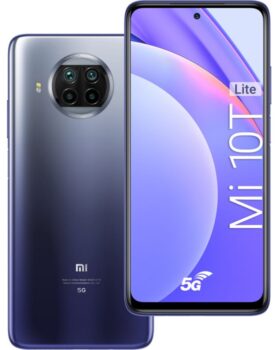
The Xiaomi Mi 10T Lite 5G is the most affordable 5G smartphone you can find. It's also the cheap smartphone that offers the best camera module on the market, as evidenced by Sony's excellent 64MP prime lens.
239 £ on BoulangerThe main sensor of the Xiaomi Mi 10T Lite 5G is a 64MP Sony IMX682 sensor with an f/1.9 aperture. This unit is overall superior to Samsung's, especially when it comes to clarity. Next to the main sensor is an ultra-wide 8MP camera. Finally, on the back, there are also two 2MP lenses. The first is a macro lens and the second is a depth sensor.
The Xiaomi Mi 10T Lite 5G offers a set of standard shooting modes: auto, pro, night mode and panorama. Note the video capture up to 4K resolution and electronic image stabilization working in Full HD format. The images of this photo smartphone show impressive details in bright scenes, normal given the high resolution of the main sensor. Feed the Mi 10T Lite with plenty of light and you'll get sharp shots that far exceed the expectations associated with its price.

Go for the Huawei P20 Lite for its 5.84" screen and large 64GB internal storage. With its 8 cores, you'll have little trouble switching between apps.
150 £ on AmazonPowered by a Li-Po battery with a capacity of 3,000 mAh, this device can last up to 960 min in conversation and 454 h when on standby. In addition, the handling of various applications is facilitated by the presence ofa powerful 2.36 GHz Kirin 659 processor backed by 4 GB of RAM. Moreover, the Android 8.0 version of its operating system is a luxury that the brand makes available to you.
Moreover, this device is quite waterproof with an IP68 rating. What's more, this line of smartphones easily fits in your pocket by being only 8.3 mm thick. Even better, its weight of 194 g makes it a light and not bulky device.
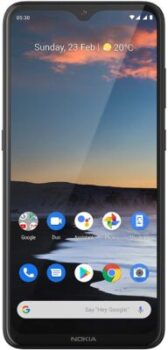
If you want a photo smartphone for less than 200 euros, rush to the Nokia 5.3. This model is for anyone who wants to get a versatile photography experience at a low price.
175 £ on FnacOffered at less than 200 euros, the Nokia 5.3 is impressive. While it doesn't stand up to direct comparisons with the Google Pixel 4a or the iPhone SE (2020), it's certainly the best budget camera smartphone in this price range. It has a four-lens setup, including a 13MP wide main lens, a 5MP ultra-wide lens, a 2MP depth sensor and a 2MP macro lens.
Photos taken with the main sensor often need some editing to look really good. All you'll need to do is use an application like Snapseed or Photoshop. The photo interface also comes with a welcome Portrait mode, if you want to take pictures for social networks. Overall, the Nokia 5.3 may not be ideal for someone who intends to use their smartphone extensively, but if you're a light user, it might be the best option. Its four-lens camera can be fun under the right conditions, but more serious photographers will have to pass.
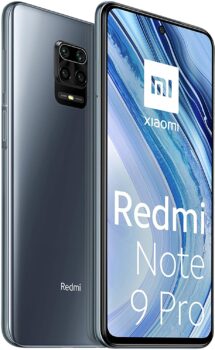
While the competition is upping the specs and prices, Xiaomi's Redmi Note 9 Pro sticks to its formula of offering good performance and photo quality at a reasonable price.
214 £ on AmazonThe rear camera module configuration remains consistent between the Redmi Note 8 Pro and the brand new Redmi Note 9 Pro. The four-camera setup includes an 8MP ultra-wide sensor, a 2MP depth sensor as well as a rather questionable 5MP macro sensor. The main lens is a 48MP Samsung GM2 sensor. This contrasts with the 64MP Sony lens used by the previous model. The 4 rear cameras of the Redmi Note 9 Pro are all relatively good.
One of the good news with this Xiaomi is that the colors in the shots are very natural. More often than not, the color temperature and white balance are perfect, which is great to see. The dynamic range is not too bad either. However, the images captured with the Note 9 Pro have a certain softness to them. Not everyone will mind the lack of sharpness. If you like taking ultra-wide or portrait images, the Redmi Note 9 Pro does a good job.

The Xiaomi Poco X3 is probably the smartphone under 200 euros that offers the most powerful photo module. It has features most often seen in high-end photophones.
173 £ on AmazonThe Xiaomi Poco X3 has a large and well-designed display. It is a 6.67-inch IPS LCD panel that offers a resolution of 2400 x 1080 px with a refresh rate of 120 Hz. This model also benefits from powerful stereo speakers and its Qualcomm Snapdragon 732G SoC handles titles like Fortnite much better than smartphones with a Snapdragon 665 or Exynos 9611 available at the same price. The Xiaomi Poco X3 has a rear camera module consisting of three cameras and a depth sensor. The main 64 MP camera is the same one found on the Realme X2 Pro. It is the latest IMX682 sensor from Sony. It combines pixel binning with an f/1.89 aperture and a sensor size of 1/1.73".
By combining 4 pixels into one and shooting 16MP images, it offers an effective pixel size of 1.6 μm. The second camera is a 13MP ultra-wide sensor that has a focal length equivalent to 119 °, about 14 mm, and the sensor measures 1/2.55". Finally, the third and last camera on the back is a macro camera intended to create a blur effect.

Compared to the View 5, the Wiko View 5 Plus has a more powerful processor and more storage. In addition, this high-end smartphone from Wiko stands out with its three and a half days of autonomy and its four-camera module. All this for less than 200 euros.
159 £ on AmazonThe Wiko View 5 Plus is not a larger variant of the View 5. Indeed, the screen remains at 6.5", but the Helio A25 chipset used on the View 5 is replaced by the more powerful Helio P35. This model also has more RAM (4GB) and more storage memory (128GB). The Wiko View 5 Plus, which is made mostly of plastic, is quite heavy thanks to its large battery. It feels good in the hand and the device leaves a real solid impression.
It should be noted that the Wiko View 5 Plus is a dual-SIM model with 4 G LTE support, which supports Bluetooth 4.2 and has a 5000 mAh battery. With this battery, and even with heavy use, the Wiko View 5 Plus guarantees a battery life of 3 and a half days.
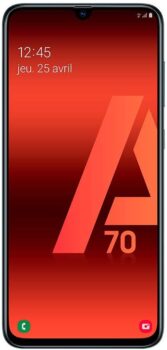
Samsung offers its Galaxy A70 at a price defying all competition. This smartphone includes a 6.7" screen and a storage capacity of 128 GB of ROM + 6 GB of RAM.
304 £ on AmazonThe Samsung Galaxy A70 is very aesthetic by its compact shape and its black color. It is topped by a 6.7" widescreen Super AMOLED display offering a definition of 2400 x 1080 pixels. It is equipped with Android 9.0 as operating system. Added to that, its Snapdragon 675 processor only enhances its performance.
Thanks to its 4,500 mAh Li-Po battery, you will have a longer battery life. In addition, it has a gyroscope and a fingerprint sensor placed just under its screen. Finally, it will be a great help to succeed in your photos every time, with its 64MP x 8MP x 5MP + 32MP sensors.
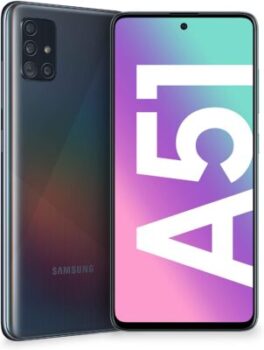
Samsung diehards looking for a high-performance photo smartphone for less than 300 euros will be delighted with the Samsung Galaxy A51. With its beautiful screen and quality photo module, it's hard to beat this price.
See priceThe Samsung Galaxy A51 is currently selling for less than 250 euros. It just so happens to pack an excellent 4-lens rear camera module. This module includes a 48MP wide lens, a 12MP ultra-wide lens, a 5MP macro sensor and a 5MP depth sensor. While the lack of autofocus makes the macro lens quite difficult to use, both the main wide-angle lens and the ultra-wide lens capture great photos in good light.
Photos are vivid and detailed, while the presence of an ultra-wide lens offers a level of versatility that you simply can't find anywhere else for less than 250 Euros. However, the quality drops off a bit in low light conditions, with shots introducing noise and blur. This doesn't take too much away from the overall experience, for results similar to the Google Pixel 4a or the 2020 iPhone SE.
Any specific needs?
The best photo smartphone under 300 euros
The best photo smartphone under 250 euros
The best photo smartphone under 220 euros
A great photo smartphone under 300 euros
Your guide :
Rate this buying guide :By rating this buying guide, you are helping us to reward our best writers. Thank you!
| TOP OF THE TOP | Less than €250 | Less than €220 | EXCELLENT | Very good | Alternative entry-level product | Good price/quality ratio | Good resolution | |

In accordance with our commitment, this buying guide does not contain any sponsored products. |
 9/10 |
 8/10 |
 7/10 |
 9/10 |
 9/10 |
 9/10 |
 9/10 |
 6/10 |
| OUR SELECTION |
Xiaomi Mi 10T Lite 5G
|
Huawei P20 Lite
|
Nokia 5.3
|
Xiaomi Redmi Note 9 Pro
|
Xiaomi Poco X3
|
Wiko View 5 Plus
|
Samsung Galaxy A70
|
Samsung Galaxy A51
|
|
The Xiaomi Mi 10T Lite 5G is the most affordable 5G smartphone you can find. It's also the cheap smartphone that offers the best camera module on the market, as evidenced by Sony's excellent 64MP prime lens.
|
Go for the Huawei P20 Lite for its 5.84" screen and large 64GB internal storage. With its 8 cores, you'll have little trouble switching between apps.
|
If you want a photo smartphone for less than 200 euros, rush to the Nokia 5.3. This model is for anyone who wants to get a versatile photography experience at a low price.
|
While the competition is upping the specs and prices, Xiaomi's Redmi Note 9 Pro sticks to its formula of offering good performance and photo quality at a reasonable price.
|
The Xiaomi Poco X3 is probably the smartphone under 200 euros that offers the most powerful photo module. It has features most often seen in high-end photophones.
|
Compared to the View 5, the Wiko View 5 Plus has a more powerful processor and more storage. In addition, this high-end smartphone from Wiko stands out with its three and a half days of autonomy and its four-camera module. All this for less than 200 euros.
|
Samsung offers its Galaxy A70 at a price defying all competition. This smartphone includes a 6.7" screen and a storage capacity of 128 GB of ROM + 6 GB of RAM.
|
Samsung diehards looking for a high-performance photo smartphone for less than 300 euros will be delighted with the Samsung Galaxy A51. With its beautiful screen and quality photo module, it's hard to beat this price.
|
|
|
Main camera resolution
|
64 MP
|
16 Mpx
|
13 MP
|
64 MP
|
64 Mpx
|
48 Mpx
|
32 MP
|
48 Mpx
|
|
Aperture
|
f/1.9
|
F/2.2
|
f/1.8
|
f/1.9
|
f/1.9
|
-
|
F/2.0
|
f/2.0
|
|
Sensor size
|
1/1.73
|
-
|
-
|
1/1.72"
|
1/1.73"
|
-
|
-
|
1/2.0
|
|
Pixel size
|
0.8 µm
|
-
|
- Ultra wide: 5 MP, 13mm-
Macro: 2 MP ,- Deep: 2 MP- Front: 8 MP, f/2.0 |
0.8 µm
|
0.8 µm
|
0.80 µm
|
0.8 µm
|
0.8 µm
|
|
Additional sensors
|
- Ultra wide : 8 Mpx, f/2.2, 120, 1/4.0, 1.12µm-
Macro : 2 Mpx, f/2.4 ,- Deep : 2 Mpx, f/2. 4- Frontal : 16 Mpx, f/2.5, 1/3.06, 1.0 µm |
- Rear: 16 Mpx, F/2.2
- Second rear camera 2 Mpx |
|
- Ultra wide: 8 MP, f/2.2, 119˚, 1/4.0", 1.12µm
- Macro: 2 MP, f/2.4, AF - Deep: 2 MP, f/2.4 - Frontal: 16 MP |
- Ultra wide: 13 Mpx, f/2.2, 119˚, 1.0 µm
- Macro: 2 Mpx, f/2.4 - Frontal: 20 Mpx, f/2.2, 1/3.4″, 0.8 µm |
- Ultra wide : 8 Mpx
- Macro : 5 Mpx - Portrait : 2 Mpx |
- Ultra wide: 8 MP, F/2.2, 123-
Deep: 5 MP, f/2. 2- Rear: 32 MP, F/1.7 |
- Ultra wide: 12 Mpx, f/2.2, 123-
Macro: 5 Mpx, f/2. 4- Deep: 5 Mpx, f/2. 2- Frontal: 32 Mpx, f/2.2, 1/2.8, 0.8 µm |
Help us improve this table:
Report an error, request the addition of a feature to the table, or suggest another product. Thank you for your kindness!
We spend thousands of hours each year studying the major specialized websites, analyzing products of hundreds of brands and reading user feedback to advise you on the best products.
We are a product review company with a single mission: to simplify your buying decisions. Our research and testing helps millions of people every year find the best products for their personal needs and budget.
To support us you can: use our links to make your purchases (which often earns us a small commission), share our articles on social networks, or recommend our site on your blog. Thanks in advance for your support!
Here are the key features to consider when buying a good photo smartphone for under £300.
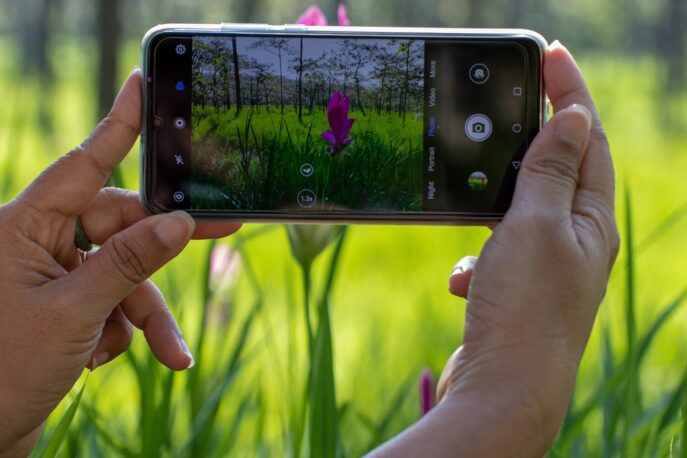
Generally speaking, the more megapixels you have in a lens, the more detail it can capture. However, when it comes to taking an impressive photo, there's more to it than just the raw detail. The software interface also plays an important role in determining the overall quality.
It's also worth noting that many cameras don't capture at the maximum megapixel settings by default, as they often provide more data than is strictly necessary. This is why Apple and Google smartphones always come with a 12MP prime lens.
The larger the aperture, the more light a lens lets in. In theory, the larger the aperture, the better the capture of foreground details. The smaller the aperture, the better the detail capture.
In lens terminology, a smaller number indicates a larger aperture, so an aperture of f/1.7 is larger than f/1.8, for example. However, software also plays a role in photo processing, so hardware isn't the only factor to consider here.
Optical Image Stabilization (OIS) helps keep the camera lens stable, correcting for smartphone movement. This is a good thing to have, as few of us use a smartphone with a tripod. So make sure the smartphone camera you're interested in has optical stabilization.
HDR support is another desirable feature on a photo smartphone. It's essentially taking multiple photos of the same subject in different exposures, then combining them in post-processing to create a single photo, which should be better than any photo taken without HDR.
RAW is the name given to a particular type of file, and the main advantage of shooting in RAW is that you can process each captured image the way you want, not the way the camera decides. RAW files also give you more control over the appearance of your final image.
In addition, RAW allows you to easily adjust exposure and change white balance, which is more difficult to do with JPEG files. One drawback of RAW files is that the file size is much larger, so they will take up more space on your smartphone.
For many people, the more lenses the better. However, the extra lenses you add to the rear camera module don't always translate into a better overall camera experience. This is especially the case with budget photo smartphones. But it does mean that if a manufacturer splurges on a four-lens rear camera module, those four lenses can end up being sub-par. In many cases, it's best to focus on the quality of the main lens.
That's precisely what you see with the Pixel 4a and the iPhone SE (2020), and it's a big part of why these two phones have the two best camera lenses among entry-level smartphones. That said, if a smartphone manufacturer puts enough time and effort into making additional rear lenses as good as possible, such devices can be a lot of fun to have.
Ultra-wide lenses, for example, allow you to take wide-angle landscape shots or more open shots in tight spaces. Telephoto lenses allow you to capture enlarged photos, while macro lenses allow you to take very close-up shots.
The hardware varies a lot from one smartphone to another. Even iPhones differ in the features they offer. But in general, the iPhone has a uniform look and parts. Since only Apple manufactures the iPhone, they have complete control over the design of their camera module. The iPhones have some of the best smartphone cameras. Their latest model, the XR, has a 12-megapixel camera that can even record 4K video. The iPhone smartphones also have a larger sensor that allows it to perform better in low light than its competitors despite the lower resolution. It also has optical image stabilization that allows it to take sharp photos even at slow shutter speeds.
The quality and functionality of the camera varies greatly when it comes to Android. At the entry level, there is no "photo"! iPhones still outperform entry-level and mid-range Android smartphones. To find Android smartphones that rival or surpass iPhones, you'll have to look at Android flagships. On Android flagships, photo modules can be as high as 64 MP or even 128 MP, while Apple retains a 12 MP camera module even on its latest behemoth, the iPhone 12 Pro.
There are many variables to consider when buying a smartphone camera. But for most, choosing between iPhone and Android is a matter of preference. Android devices are just as good if not better than iPhones, but at the high end only. If you like having dozens of features, then Android is the best for you. But if you want a smartphone that offers a seamless experience while taking great photos, then the iPhone is a great choice.

Always available
The greatest thing about a smartphone camera is that you always have it with you. If you come across an unexpected moment that you want to capture, you can simply use your phone and take the picture. You don't have to worry about always lugging around a heavy camera in anticipation of such moments. Having a camera constantly at your disposal is a huge advantage, especially when it comes to capturing spontaneous incidents.
Simultaneous editing
Something unique to mobile photography is the fact that you can edit your photos on the go. With other digital cameras, you have to transfer your images to a computer first before you can edit them. With smartphones, you can launch your favorite photo editing app and make the desired adjustments immediately after taking the picture. Not only that, but you can also share your photos immediately with friends and family wirelessly, via messaging or on social networks. No other consumer camera has this kind of all-in-one convenience.
Automatic backup
As someone who has lost a camera with all of his vacation photos, I know how important it is to back up your photos. This is where smartphone cameras win extra points. You can set your phone to automatically sync your mobile images to your cloud account. That way, every time you take a picture, not only will your picture be saved on your phone, but it will also be saved in the cloud. This way, you can access your photos from anywhere, even if you lose your smartphone.
Fast and easy to use
Smartphone cameras are the easiest to use, even a baby can figure it out (yes, I've seen babies take selfies). Basically, there's nothing difficult about taking pictures with a phone, you just open an app and press a button. There's nothing else to try to manipulate. It's practically simple to use.
Good introduction to photography
If you're curious about pursuing a career in photography or adopting it as a hobby that generates some extra income, smartphone photography is a good place to start. You can even earn money from your mobile photos. For starters, it's an inexpensive way to learn about photography. Before you splash out on an expensive camera, you can use your phone's camera to learn the principles of photography and what is needed to take good pictures.
Choose smartphones with expandable memory.
If you're really looking for a photo smartphone to take pictures regularly, go for models with expandable memory. Most Android phones have a Micro SD slot, but iPhones don't.
Do not overuse the flash.
Most smartphones have a built-in LED flash, but since they tend to be a bit harsh when used up close and don't have a long range, this criterion doesn't need much attention. Some smartphones offer a two-tone LED flash for enhanced lighting. And if you're obsessed with nighttime selfies, you might want to find a smartphone with an LED flash on the front.
The ability to capture 4K video is not always desirable.
4K video has almost become a standard on flagships. However, more and more manufacturers are integrating on their entry-level models. Of course, this means that the video you capture will be of higher quality. It's also worth remembering that 4K video takes up a lot of space. Therefore, if you don't have a smartphone with a lot of storage capacity, or a smartphone on which you can't use a memory card, you may want to stick with Full HD video.
A water-resistant photo smartphone would be a real plus.
From a
photography perspective, having a water-resistant smartphone means you can take pictures in the rain or even underwater (to a certain depth and for a specific amount of time)
.
Use an external microphone.
When capturing video, good sound is just as important as sharp images. Your phone's internal microphone is designed for making phone calls, not for recording high-quality sound. You'll find many models of external microphones on the market that plug directly into your USB or Lightning port, or that work with your phone's audio dongle.
The best photo smartphone under £300 depends on your needs and budget. Read our buying guide to find out which products are the best at the moment.
Knowing how fast the smartphone camera can focus and shutter response is helpful, but you'll probably have to read reviews on the internet to find out. It's also useful to know how many frames per second (fps) the camera can capture images at, as fast fps can increase your chances of capturing a good photo in situations where your subject is moving.
There may not be enough light in places like caves, concert halls, etc. For your smartphone to take a good picture, therefore, in situations like this, the camera will increase the ISO levels. This will make the lens more sensitive to light. This is great, but it can increase the chances of noise ruining your shot.
Since there is no traditional viewfinder, you will hold your smartphone with 2 hands and use the screen as a viewfinder and shutter release. As a result, the larger the screen, the more viewing angles you will have. Also, if you see that a smartphone's screen is built from Gorilla Glass, that's a good thing, as it will be more scratch resistant. The higher the resolution of the screen, the clearer the image will be, you may have to check the smartphone's specifications to get the details.
For the longest time, smartphone cameras could only zoom in digitally. The problem is that digital zooming degrades the image quality more and more as you zoom in. In an effort to improve image quality when zooming in with a smartphone, manufacturers added optical zoom to their cameras when they introduced smartphones with multiple camera modules on the back.
Every month we help more than 1 000 000 people buy better and smarter.
Copyright © 2022 - Made with ♥ by buyingbetter.co.uk
Your reviews and buying guides 0% advertising, 100% independent!